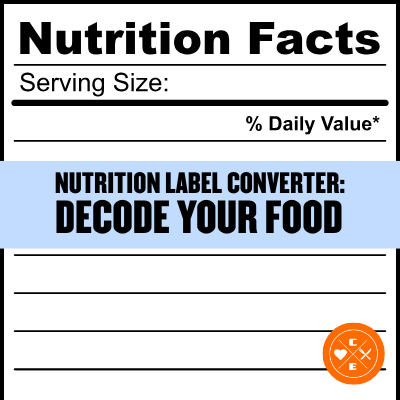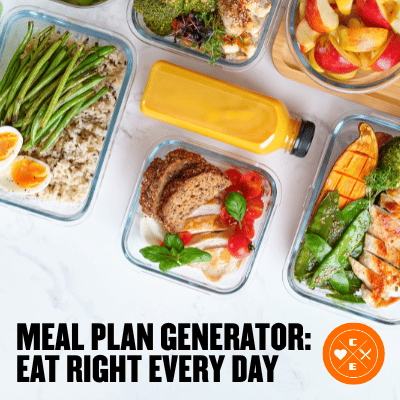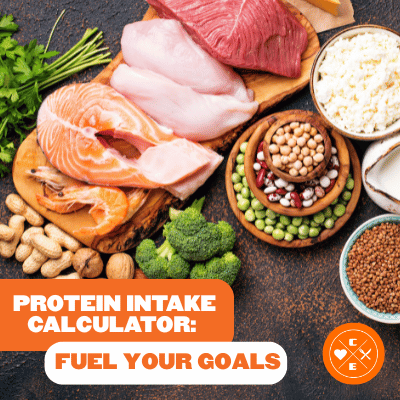Last updated: September 15, 2025
Nutrition Label Converter: Decode Your Food
Quick answer: Food labels are designed for per-serving comparisons—not for how you actually eat. Use the converter below to resize servings, convert units, and check macro math (protein, carbs, fats, fiber, sugar alcohols). This guide shows you how to enter numbers correctly, avoid label traps, and make fast, confident choices.
How to Use the Converter (Step by Step)
- Find the serving size on the label. Enter it exactly as printed (e.g., “2/3 cup (55 g)” or “1 bar (48 g)”). If volume is listed, prefer the grams number for accuracy.
- Enter calories and macros as printed for one labeled serving: total fat, carbs, fiber, sugars, added sugars, sugar alcohols (if listed), and protein.
- Adjust servings eaten. If you ate 1.5 servings or the whole package (e.g., “2 servings per container”), set that in the converter to see totals for what you actually ate.
- Use grams ↔ ounces when needed. Many labels list grams—convert to ounces if your food scale is set that way (see conversions).
- Sense-check the math. If calories look “off,” review rounding and macro math below.
Label Fields Explained
- Serving size: the reference amount the rest of the label is based on. Packages often contain multiple servings.
- Calories: energy per labeled serving.
- Total fat / saturated fat: fat grams per serving (9 kcal/g). “Trans fat” should be as low as possible.
- Total carbohydrate: includes starch, sugars, and fiber (4 kcal/g for carbs counted toward energy).
- Total sugars / added sugars: total includes natural + added; “added” isolates sweeteners added during processing.
- Dietary fiber: most fibers don’t raise blood sugar and are subtracted in net carb math (see below).
- Sugar alcohols: if listed, they may partially or fully subtract in net carb math depending on the type.
- Protein: 4 kcal/g; prioritize 20–40 g per meal for fullness—see protein bar guide.
- % Daily Value (%DV): based on a 2,000-kcal diet; a guide, not a mandate. Useful to compare products.
- Sodium: keep moderate; see hydration tips in our electrolyte guide.
Net Carbs & Macro Math
Net carbs estimate carbs that impact blood sugar/ketosis:
- Formula:
Net carbs = Total carbs − Fiber − Sugar alcohols* - *Sugar alcohols: erythritol usually counts as ~0; xylitol/sorbitol are often counted partly; maltitol often affects blood sugar more—some people count half or all. When in doubt, be conservative.
- Macro calories check: protein (4 kcal/g) + carbs (4 kcal/g) + fat (9 kcal/g) + alcohol (7 kcal/g) ≈ label calories. Small differences are normal due to rounding and fiber/sugar-alcohol handling.
Rounding Rules & “Zero” Traps
- “0 g” isn’t always zero. Labels can round very small amounts down to 0. Treat frequent “0 g” servings (e.g., sprays, sweeteners) as small but nonzero if you use multiple servings.
- Calories may not equal macro math exactly. Expect a small +/- due to rounding on each line.
- Per-prepared vs. dry. Some mixes list values “as prepared”; others list dry mix only. Enter the one that matches how you eat it.
Units & Quick Conversions
| Conversion | Value | Notes |
|---|---|---|
| g ↔ oz | 1 oz = 28 g (28.35) | Use grams for best accuracy. |
| kcal ↔ kJ | 1 kcal = 4.184 kJ | Some labels list kilojoules. |
| Macro calories | Carb 4 • Protein 4 • Fat 9 • Alcohol 7 | Per gram. |
Volume (cups/tbsp) varies with food density; weighing in grams is most accurate—especially for oats, rice, and cereal. See our guides to oatmeal, rice, and popcorn.
Walkthrough Examples
Example A: Protein Bar (1 bar = 48 g)
- Label: 200 kcal • 7 g fat • 22 g carbs (3 g fiber, 5 g sugar alcohol) • 17 g protein.
- Net carbs: 22 − 3 − 5 = 14 g (if counting sugar alcohol fully; adjust if you count it partially).
- Whole package? If you eat 1.5 bars, set servings = 1.5 to see totals.
Example B: Granola (2/3 cup = 55 g; 2 servings per container)
- Label: 260 kcal • 9 g fat • 39 g carbs (5 g fiber, 12 g sugars) • 6 g protein.
- “I ate the bag” check: Set servings = 2 to see full-bag totals.
- Swap idea: Use 1/4–1/3 cup granola + high-protein yogurt + berries (see smart swaps).
Example C: Rice (dry vs cooked)
- Dry rice has different grams/serving than cooked rice. If your label shows dry weights, measure dry.
- For “as prepared” microwave cups, enter the prepared numbers directly (see rice guide).
Common Pitfalls (and Fixes)
| Issue | What to check | Fix |
|---|---|---|
| Calories don’t match macro math | Rounding; fiber/sugar-alcohol handling | Allow a small +/-; if way off, re-enter grams or switch to grams instead of cups. |
| “0 g” add-ons add up | Cooking sprays, sweeteners, condiments | Count multiple “0 g” servings as a small amount if used often. |
| Serving size trickery | “2.5 servings per bag,” tiny teaspoons, “as prepared” | Use the converter’s servings control to reflect what you actually ate. |
| Prepared vs dry weights | Oats, rice, pasta, stuffing mixes | Enter the version that matches how the label is stated. |
| Electrolyte & sodium confusion | Sports drinks, bouillon “broth” hacks | Keep sodium moderate unless medically directed; see our electrolyte guide. |
Compare Products Quickly
- Normalize by 100 g (or equal serving sizes) to make “apples to apples.”
- Check protein per 100 kcal for fullness value.
- Scan added sugar and sodium per serving; pick the lower one when taste is similar.
- Ingredients list: shorter isn’t always better—but watch for sugar by many names and heavy cream/oil early in the list.
Related Reading
- Are Protein Bars Good for Weight Loss?
- Is Oatmeal Good for Weight Loss?
- Is Rice Good for Weight Loss?
- Is Popcorn Good for Weight Loss?
- Healthy Food Alternatives to Lose Weight
- Carbs & Weight Loss: Make Them Work
- Calorie Calculator: Find Your Daily Needs
FAQs
Do I count net carbs or total carbs?
It depends on your plan. Many people track net carbs (total − fiber − qualifying sugar alcohols). If progress stalls, try total carbs briefly to recalibrate.
What if my label lists weird serving sizes?
Use the grams amount whenever possible, and adjust servings in the converter (e.g., 1.3 servings). Grams avoid volume-measurement errors.
Why do calories and macros sometimes not “add up”?
Rounding. Each line can round up or down; small differences are normal. Big gaps usually mean a data entry mismatch (dry vs prepared, multiple servings, or sugar-alcohol handling).
Is “0 g trans fat” always zero?
Labels can round very small amounts down to zero. If a product uses partially hydrogenated oils or you consume many servings, assume a small nonzero amount.
Are % Daily Values personalized?
No—%DV is based on a 2,000-kcal template. Use our Calorie Calculator to personalize targets.
Disclaimer: This article is for general information only and isn’t medical advice. If you have medical conditions or specialized nutrition needs, work with your clinician or dietitian.




